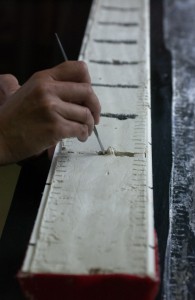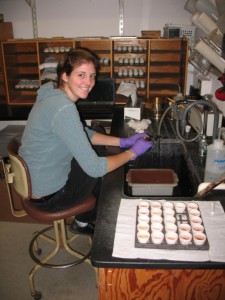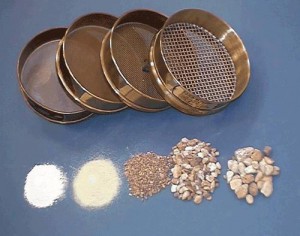Sampling and Sieving
Sieving helps us find sand layers that aren’t easy to see, and it shows us exactly how big each layer is. After the mud is dried and burned to remove any organic material, like wood or leaves, it is crushed and then sieved. Putting the mud through a sieve washes away the very small pieces of sediment, showing us where layers of coarse grains are in the core.
A stronger storm surge is capable of transporting more sediment and larger/coarse grains into the ponds where we take cores from. The location of a layer of coarse material, along with other age dating techniques, helps us know when a storm happened.



